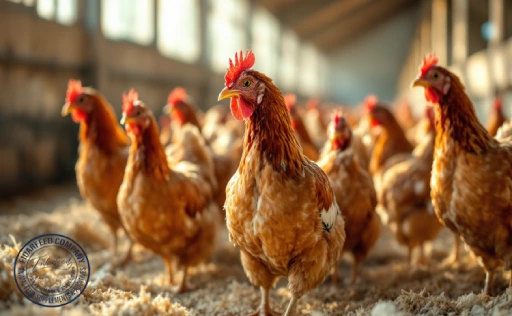What is TMR Corn Silage, and Why Does It Matter?
TMR Corn Silage is a crucial component of Total Mixed Ration (TMR) feeding systems for dairy and beef cattle. This feed combines chopped corn plants, including the stalk, leaves, and grain, fermented to preserve nutrients and enhance digestibility. Farmers worldwide rely on this high-quality forage to provide cattle with a balanced and energy-rich diet, improving animal health, productivity, and farm efficiency.
Corn silage plays a vital role in ruminant nutrition because it offers a consistent, high-energy feed source. Unlike traditional forage, this silage allows for precise diet formulation, ensuring cattle receive essential nutrients in every bite. Whether you’re a seasoned livestock breeder or just starting, understanding its significance can help optimize your feeding strategy.
The Nutritional Benefits of TMR Corn Silage for Cattle
TMR corn silage is packed with essential nutrients that support optimal cattle health and performance. It provides a balanced mix of fiber, carbohydrates, and protein, making it an ideal feed for both dairy and beef cattle.
High Energy Content: Corn silage is rich in starch, providing a readily available energy source that fuels milk production in dairy cows and weight gain in beef cattle.
Learn more about: TMR Silage Animal Feed
Improved Digestibility: The fermentation process enhances nutrient availability, making digestion easier and reducing the risk of digestive issues like acidosis.
Rich in Fiber: It promotes rumen health, ensuring proper fermentation and microbial activity.
Consistent Quality: Unlike pasture-based feeding, this silage maintains its nutrient value throughout the year, providing a stable diet regardless of seasonal changes.
How to Prepare High-Quality TMR Corn Silage
Producing high-quality TMR corn silage starts with proper harvesting, fermentation, and storage techniques. Here’s how to get it right:
- Harvesting at the Right Time: The ideal moisture content for ensiling corn is between 65-70%. Harvesting too early leads to excess moisture, while late harvesting results in lower digestibility.
- Chopping to the Correct Length: The optimal chop length (⅜ to ½ inch) ensures proper packing and fermentation while maintaining fiber effectiveness.
Learn more about: Silage vs. TMR: Which is Right for Your Herd?
- Effective Compaction: Packing the silage tightly in bunkers or silage bags removes oxygen, encouraging lactic acid bacteria growth for proper fermentation.
- Covering and Sealing: Using airtight covers prevents spoilage, mold growth, and nutrient loss.
Best Practices for Feeding TMR Corn Silage to Dairy and Beef Cattle
To maximize the benefits of TMR corn silage, follow these best practices:
- Balance the Ration: Blend silage with protein sources, minerals, and vitamins to meet the specific nutritional needs of dairy or beef cattle.
- Monitor Feed Intake: Adjust rations based on animal weight, production stage, and performance goals.
Learn more about: Did You Know Livestock Productivity with TMR Silage Can Double?
- Maintain Freshness: Regularly check for spoilage and remove any moldy or decayed portions before feeding.
- Introduce Gradually: Sudden dietary changes can disrupt digestion; introduce silage incrementally for smooth adaptation.
Common Mistakes to Avoid When Using TMR Corn Silage
Even experienced farmers can make mistakes that compromise silage quality and cattle performance. Avoid these common pitfalls:
- Improper Harvest Timing: Too wet or too dry silage can lead to poor fermentation and reduced feed efficiency.
- Inadequate Compaction: Air pockets in silage piles cause spoilage and mycotoxin contamination.
Learn more about: TMR Silage Production: A Farm-to-Feed Process
- Ignoring Ration Balancing: Over-reliance on silage without proper nutrient supplementation can lead to deficiencies or excesses.
- Poor Storage Management: Failing to cover silage properly results in dry matter losses and lower feed quality.
Comparing TMR Corn Silage with Other Feed Options
How does TMR corn silage stack up against other feed choices? Here’s a quick comparison:
- Versus Hay: Corn silage has higher energy content and digestibility, making it a more efficient feed source.
Learn more about: How TMR Silage Cuts Down Veterinary Expenses in Livestock Farming
- Versus Grain-Based Diets: While grains provide energy, they lack fiber, making corn silage a better option for maintaining rumen health.
- Versus Pasture Feeding: Unlike pasture, which fluctuates in quality, silage ensures a steady nutrient supply throughout the year.
The Economic Advantages of Using TMR Corn Silage
TMR corn silage isn’t just nutritionally valuable; it’s cost-effective, too. Farmers using corn silage report:
- Lower Feed Costs: Growing and ensiling corn on-site can reduce reliance on expensive purchased feeds.
Learn more about: TMR Silage as Complete Feed: Benefits for Dairy Cows
- Higher Production Efficiency: Consistent energy levels translate to improved milk yields and faster beef weight gains.
- Waste Reduction: Properly stored silage minimizes losses compared to hay or other forage options.
Ensuring Silage Quality: Storage and Preservation Tips
To maintain high-quality silage, proper storage and preservation are key. Follow these tips:
- Use Silage Inoculants: These enhance fermentation, improving digestibility and reducing spoilage.
- Maintain Proper Silage Density: The more tightly packed, the better the preservation.
- Regularly Check for Spoilage: Monitor for signs of heating, foul odors, or visible mold.
Learn more about: Common Challenges in TMR Silage and How to Solve Them
The Role of TMR Corn Silage in Sustainable Farming
TMR corn silage contributes to environmentally sustainable farming by:
- Reducing Waste: Efficient ensiling minimizes feed spoilage.
- Lowering Carbon Footprint: Feeding silage produced on-farm reduces transportation emissions from purchased feed.
- Enhancing Soil Health: Corn silage rotations can improve soil structure and fertility when managed properly.
Learn more about: What Is TMR Silage and Why Is It a Smart Choice for Livestock Feed?
Final Thoughts: Is TMR Corn Silage the Right Choice for Your Farm?
TMR corn silage is a powerful tool for dairy and beef farmers seeking a reliable, cost-effective, and nutritious feed source. By understanding its benefits, proper preparation, and best feeding practices, you can optimize your cattle’s health and productivity while ensuring long-term sustainability.
Are you using this feed on your farm? Share your experiences, ask questions, or leave a comment below—we’d love to hear from you!








